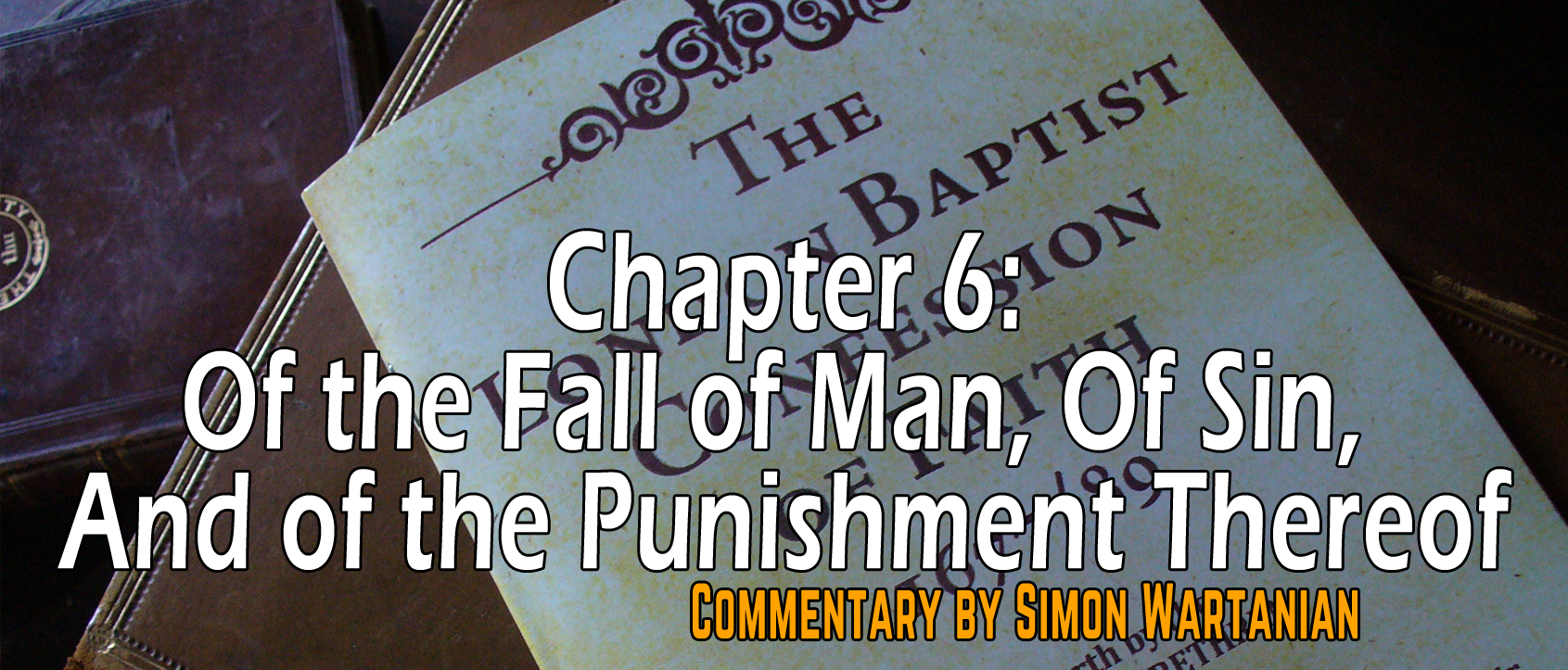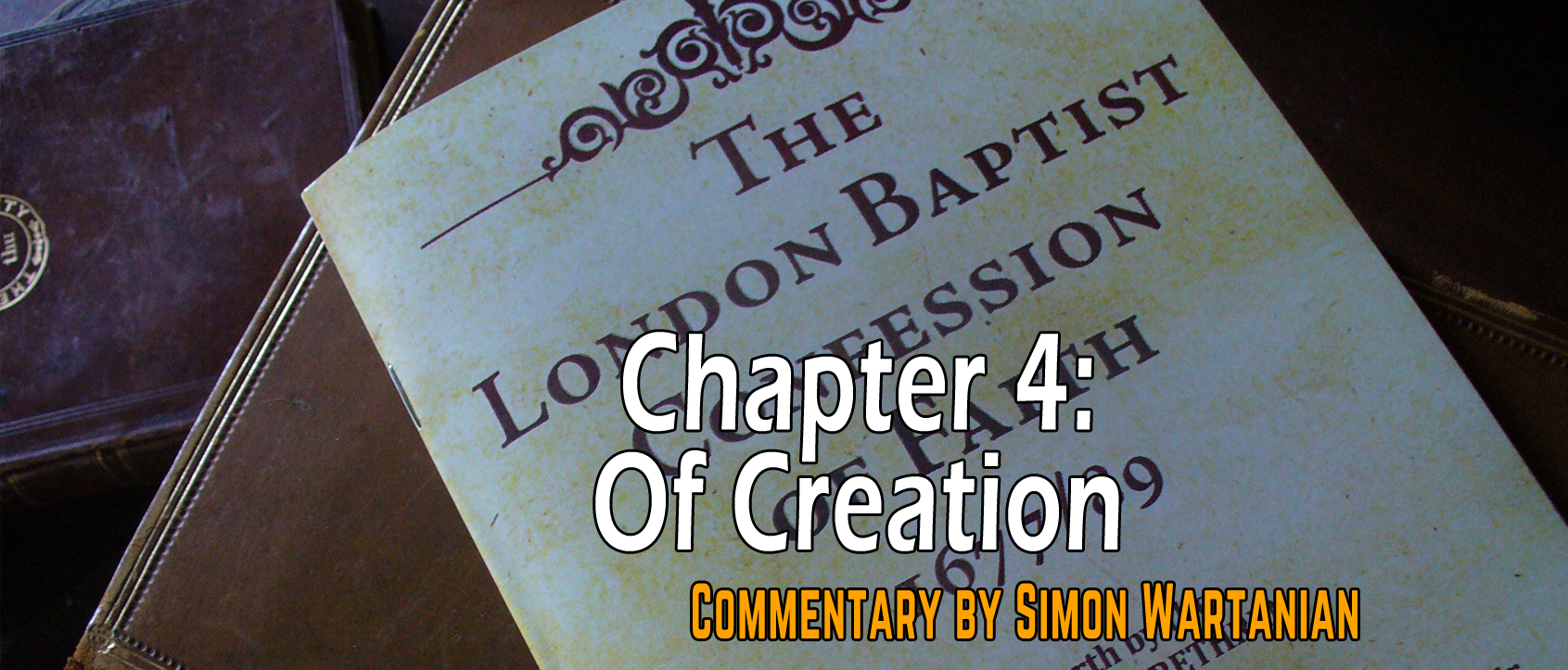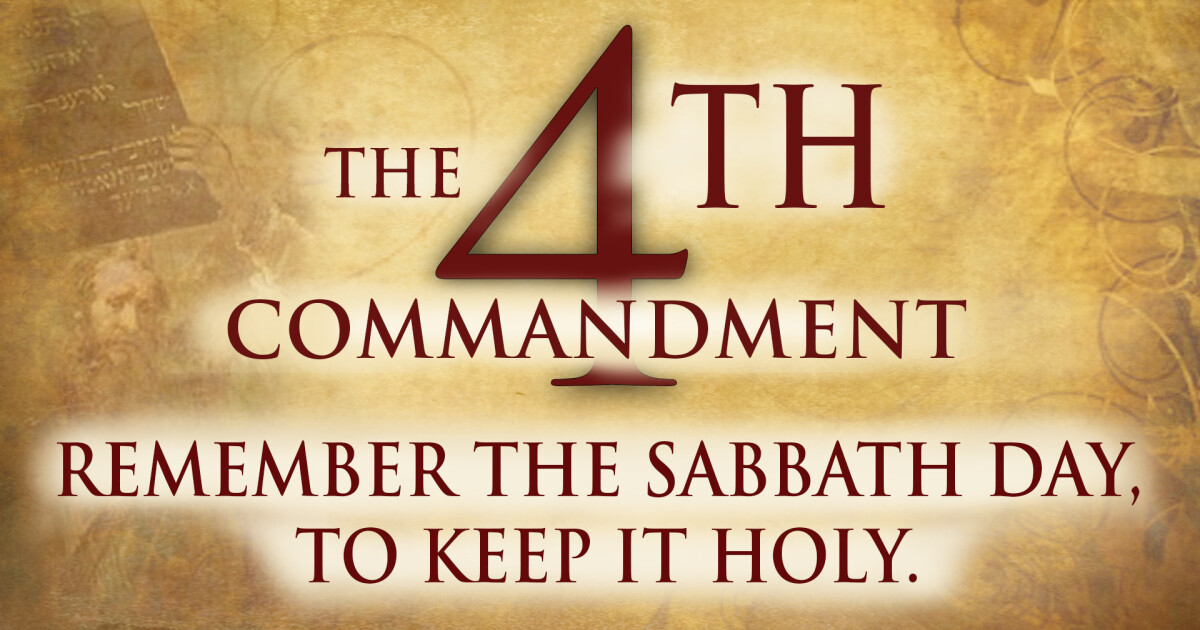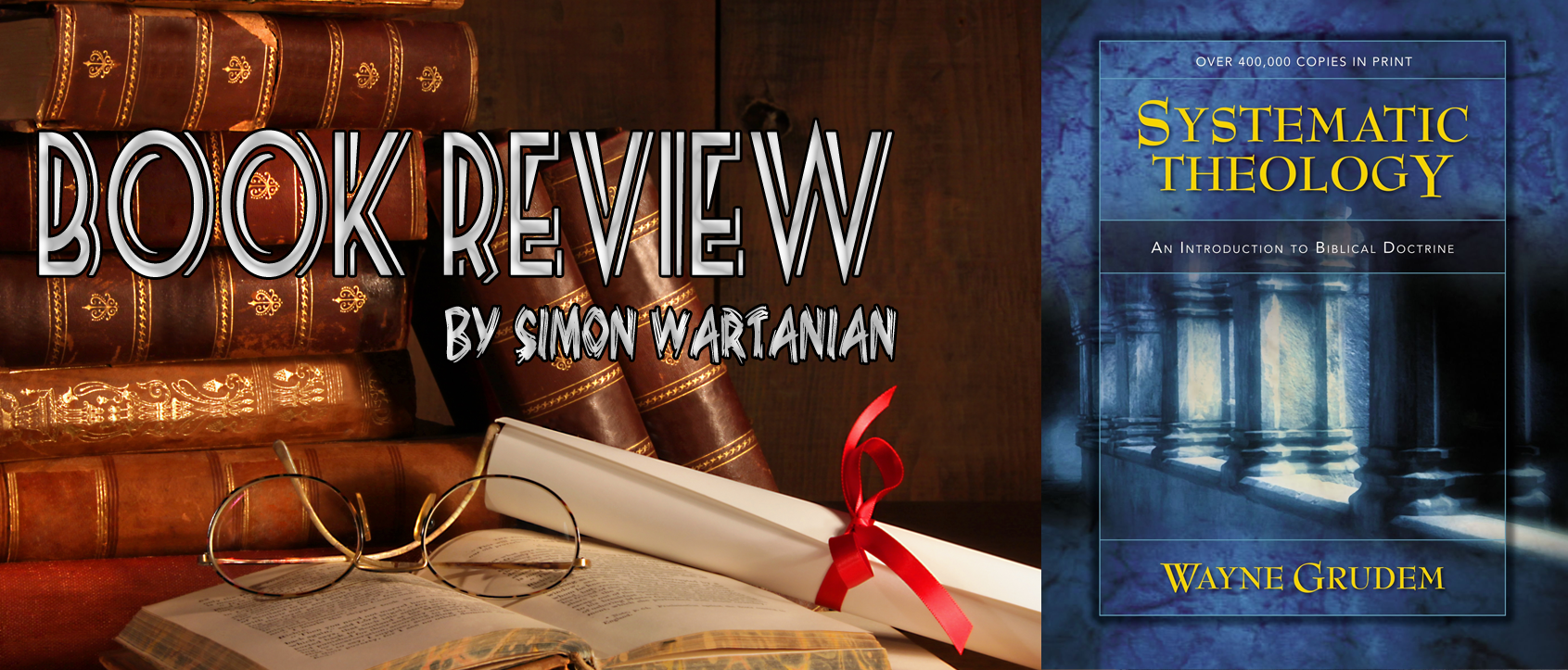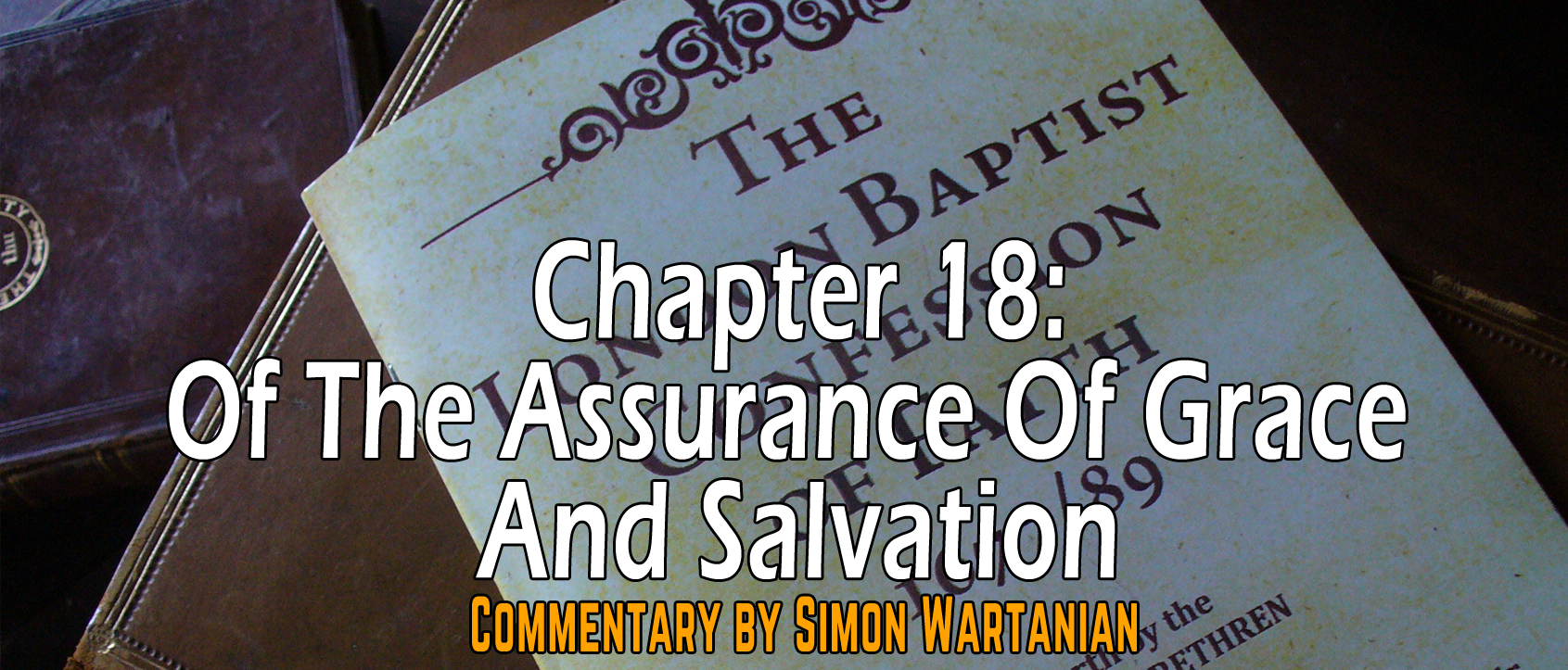Search
You searched for 'New Testament'
I've found 44 results!
How This Union Is Spoken Of In Scripture
In the New Testament, especially in the Epistles of Paul, this blessed union with Christ is variously mentioned whether by pictures or by the words used. For instance, Paul says that “built on the foundation of the apostles and prophets, Christ Jesus himself being the cornerstone, in whom the whole structure, being joined together, grows into a holy temple in the Lord. In him you also are being built together into a dwelling place for God by the Spirit” (Eph. 2:20-22). In this analogy, we see the apostle comparing our union with Christ with a building and its stones. We are a temple, but we are a temple because we are in Christ Who is building us into a temple for God. This is similar to what is said by Peter in 1 Peter 2:4-5. In this passage and others like it, we see that our union with Christ is the foundation for our communion with the believers (paragraph 2). We are also described as members of a body and Christ being the Head (Eph. 3:6; 5:29-30; 1 Cor. 12:12-27; Col. 2:19).
R. L. Dabney gives a helpful summary of the images used by Scripture to illustrate this blessed union:
The nature of this union is to be deduced from a full comparison of all the representations by which the Word illustrates it. In one place it is described by the union of a vine with its branches; and in another, of the stock of an olive tree with its limbs. (John 15:1-5; Rom. 11:16-24) The stock is Christ, diffusing life and fructifying sap through all the branches. Second, our Savior briefly likens this union to that between Himself and His Father. (John 17:20-21). Grace will bring the whole body of the elect into a sweet accord with Christ and each other, and harmony of interest and volition, bearing some small relation to that of the Father and the Son. Third, we find the union compared by Paul to that between the head and the members in the body; the head, Christ, being the seat and source of vitality and volition, as well as of sense and intelligence; the members being united to it by a common set of nerves, and community of feeling, and life, and motion. Eph. 4:15-16. Fourth, we find the union likened to that between husband and wife; where by the indissoluble and sacred tie, they are constituted one legal person; the husband being the ruler, but both united by a tender affection and complete community of interest, and of legal obligations. (Eph. 5:31-32; Ps. 45:9). Fifth, it is illustrated by the union of the stones in a house to their foundation cornerstone, where the latter sustains all the rest, and they are cemented to it and to each other, forming one whole. But stones are inanimate; and therefore the sacred writer indicates that the simile is, in its nature, inadequate to express the whole truth, by describing the cornerstone as a living thing, and the other stones as living things together composing a spiritual temple. See 1 Cor. 3:11-16; 1 Pet. 2:4-6.[6]
Besides the pictures of this blessed union, we also see this union mentioned in the words that Paul often uses. For example, “in Christ” comes up 9...
In Gen. 1:26 both words are used, but in the twenty-seventh verse only the first. This is evidently considered sufficient to express the whole idea. In Gen. 5:1 only the word “likeness” occurs, but in the third verse of that chapter both terms are again found. Gen. 9:6 contains only the word “image” as a complete expression of the idea. Turning to the New Testament, we find “image” and “glory” used in I Cor. 11:7, “image” alone in Col. 3:10, and “likeness” only in Jas. 3:9. Evidently the two are used interchangeably in Scripture.[5]
That man is made in the image of God means that there are similarities between man and God. This is even more strengthened when we observe that man is the only creature made in the image of God. This means that “man’s relationship to the rest of creation is analogous to God’s relationship to the whole creation.”[6] This could be seen in the way that God, as Creator and Governor of everything, delegates some of that governorship to His image-bearers. Genesis 1:28 reads, ‘And God blessed them. And God said to them, “Be fruitful and multiply and fill the earth and subdue it, and have dominion over the fish of the sea and over the birds of the heavens and over every living thing that moves on the earth.”’ God commands man to subdue and fill the earth with image-bearers of God. They are to have dominion over the earth. They are to have dominion over the earth which the Lord made and placed man upon it. They are to rule over it as delegates from God and not as originators of the earth or with absolute power. They are to rule under the Lordship of God. They are to do some things which are similar to what God does. There is an analogy, not a total likeness in what man was commissioned to do and what God does. Basically, God places His works of day 3 through 6 under man’s dominion and tells him to make it subservient to him. God places us as His representatives on the earth and commands us to fill it with image-bearers of His, so that His glory may be manifested to the world. Therefore, at the minimum, the image of God means that “as humans, we may reflect and reproduce at our own creaturely level the holy ways of God, and thus act as his direct representatives on earth. This is what humans are made to do, and in one sense we are human only to the extent that we are doing it.”[7]
Man is further distinguished from the rest of creation on the earth when we observe that man is a volitional and moral creature. Man is able to make choices that have motivations and which are self-conscious, unlike the lower creation and animals, but similar to God. Man is able to think of, plan and consider his choices and options, unlike the animal kingdom. Furthermore, man possesses the law of God which enables him to distinguish good from evil (e.g., Rom. 2:14-15; see also here). Man has moral qualities that animals do not have. When speaking of the restored image of God, Paul says that it constitutes righteousness, holiness, and knowledge (Eph. 4:24; Col. 3:10). This was also true at the beginning of the creation. Redemption restores the fallen image of God in us to its original and perfected state. Man was made upright (Eccl. 7:29) and possessed a law...
- Getting the Garden Right: Adam’s Work and God’s Rest in Light of Christ (Cape Coral, FL: Founders Press, 2017).
- The First Day of the Week in the New Testament. 8-part blog post, beginning with the first here https://cbtseminary.org/the-first-day-of-the-week-in-the-new-testament-part-1-of-8/.
- Roger T. Beckwith, Wilfrid Stott, This Is The Day: The Biblical Doctrine Of The Christian Sunday In Its Jewish And Early Church Setting (London: Marshall, Morgan and Scott, 1978). Can be found at https://earlychurch.org.uk/book_sabbath_beckwith-stott.php.
- Robert L. Dabney:
- Systematic Theology (Edinburgh: Banner of Truth Trust, 1985 [1871]). pp. 366-397.
- From The Seventh Day To The First: A Brief Look At The History Of The Sabbath Day Vs. The Lord’s Day. Found at https://ncfic.org/resources/view/from-the-seventh-day-to-the-first-a-brief-look-at-the-history-of-the.
- The Christian Sabbath Its Nature, Design and Proper Observance (1882). Found at http://www.the-highway.com/christian-sabbath_Dabney.html.
- Charles Hodge, Systematic Theology: Volume 3: Soteriology (Peabody, MA: Hendrickson Publishers, 1999 [1872]), pp. 321-348, chapter 19:8. Can be found at http://www.ccel.org/ccel/hodge/theology3.iii.v.viii.html.
- A. H. Strong, Systematic Theology: A Compendium Designed For The Use Of Theological Students (London: Pickering & Inglis, 1970 [1907]), pp. 408-410.
- Thomas Watson:
- The Ten Commandments (1692). The chapter on the fourth commandment found at https://ccel.org/ccel/watson/commandments/commandments.iv.iv.html.
- The Christian Soldier; or Heaven Taken by Storm, “Part 6, by sanctifying the Lord’s Day and holy conversation.” Found at https://www.apuritansmind.com/puritan-worship/the-lords-day/sanctifying-the-lords-day-and-holy-conversation-by-rev-thomas-watson/.
- Ezekiel Hopkins, An Exposition Of The Ten Commandments (1690), pp. 192-224. Found at https://faculty.gordon.edu/hu/bi/ted_hildebrandt/otesources/02-exodus/text/books/hopkins-tencommands/hopkins-tencommands.pdf.
- Jonathan Edwards, The Works of Jonathan Edwards, Volume 2, revised and corrected by Edward Hickman (Edinburgh: Banner of Truth Trust, 1974 edition). pp. 93-103.
- Three sermons entitled “The Perpetuity and Change of the Sabbath.” https://ccel.org/ccel/edwards/works2/works2.iv.xv.html
- Samuel E. Waldron:
- A Modern Exposition Of The 1689 Baptist Confession Of Faith (Darlington: Evangelical Press, 2013), pp. 336-341.
- Lectures On The Lor
2. Prophets
He demonstrates from the OT that a prophet was simply the mouth of God to the people (Ex 4:10-17; 7:1-2). Also, what the prophets said had to be 100% accurate according to the regulations of Deuteronomy 13:1-5 and 18:15-22. Therefore he proceeds to the New Testament with the same definition of prophecy and this is understandable.
He first considers few passages used in support of continuationism including Ephesians 4:11-13; 1 Cor 13:8-13 and the case of Agabus (Acts 21:10-11).
On Ephesians 4 he says that if we maintain that everything in verse 11 is needed for our maturity and unity in the faith then we are proving too much. If we follow that, then we must also say that the apostolate must continue, but we have proven that it in fact did not continue. Therefore, he says that the apostles must refer to the writings and teaching of the apostles that we have in the New Testament and prophets or prophecy refers to the book of Revelation. He does not dispute if we have prophecy (i.e. the book of Revelation), rather if we have ongoing or new prophecy.
I don't think that the putting of Revelation under the category of "prophets" is right. John was not writing as a prophet, but was writing with the authority of an Apostle, that is the case for every NT book. It was either written by an apostle or an associate. I know of no NT book whose author was an prophet.
Therefore, I do indeed agree that we have the Apostles in their writings, but I know of nothing that we have from prophets, therefore, it would seem that they would be necessary for the building up and achieving the unity of faith. (I don't know how this practically looks, but I just want to understand what the passage is teaching)
On 1Cor 13:8-13 contrary to some cessationist Dr. Waldron does not believe that the verse is speaking about the closing of the canon, rather it refers to the state after the coming of Christ when we will have "face to face" knowledge of God. But he says that the passage does not specify the time of the cessation of prophecy and tongues. So this question is undecided by this verse. On page 64 he says "The conclusion must be that Paul is teaching the doing away of partial knowledge in favor of perfect knowledge in verse ten. He says nothing about when the gifts of prophecy and tongues pass away. He only refers to the passing of the present partial knowledge that was conveyed through those gifts. He leaves open the question of the time of the passing of the gifts of prophecy and tongues."
He tries to interact with Grudem on Agabus, but I don't believe that he sufficiently refuted Grudem. Basically, Grudem with the words of Richard Gaffin was accused of requiring "pedantic precision" on Agabus (p. 67). I've read Gaffin's and Waldron's case against Grudem on Agabus, but I don't believe that they've refuted what Grudem has argued for.
Since according to Dr. Waldron's survey of the OT prophecy is simply the forthtelling of what God has put into the prophet's mouth and this principle he says also in the par excellence the Lord Jesus, therefore, prophecy cannot at the present time exist. The canon is closed and even continuationists admit that thei...
The Word software resources
Modules for the commentaries
- Calvin
- Gill
- Utley
- Henry – by default in The Word.
- Bengel
- Clarke
- Commentary Critical and Explanatory on the Whole Bible (direct link)
- Albert Barnes New Testament Notes
The Bible is God’s sole authoritative Word, His very speech (2Tim 3:16). God used holy men as His instruments and spoke through them, not ignoring or overriding their vocabularies and use of language (2Pet 1:20-21).
It is incapable of being wrong, because it comes from the God who is the Truth (Jn 14:6) and who cannot lie (Heb 6:18). The Word of God reflects the character and its integrity is based upon the character of God.
The Bible, which is the collection of 39 Old Testament books and 27 New Testament books is the very and certain Word of God.
Trinity
Dr Grudem excellently shows the basis of the doctrine of the Trinity from the Scripture and not from creeds as is often alleged by unbelievers. I have often gone back to chapter 14 (God in Three Persons: The Trinity) to get more insight into this great doctrine and the biblical support.
Dr Grudem goes on to prove the doctrine of the Trinity by using three statements that summarize the doctrine:
- God is three persons.
- Each person is fully God.
- There is one God.
From there on he goes into the Scriptures to prove just that!
See my case for the doctrine of the Trinity in my commentary on the 1689 Baptist London Confession.
God’s Providence
This is the first chapter that I read from Grudem. Chapter 16: God’s Providence. And man...I was in for something. It was excellent and it was fully biblical. I loved it.
He defines God’s Providence as follows:
God is continually involved with all created things in such a way that he (1) keeps them existing and maintaining the properties with which he created them; (2) cooperates with created things in every action, directing their distinctive properties to cause them to act as they do; and (3) directs them to fulfill his purposes.[2]
God is absolutely sovereign over His creation. Nothing can happen without His will. Moreover He has ordained whatsoever comes to pass.
Although God is absolutely sovereign, even over chance events (Prov 16:33), man is still held responsible (Isaiah 11, Gen 50:20; Acts 4:27-28).
This is above our understanding, but it is what the Scriptures teach and thus we are to obey it.
This is not fatalism, this is the carrying out of a divine plan of a God who is just, holy, wise and merciful.
We are not “robots,” as many non-Calvinists would accuse Calvinists of making man, we make responsible choices, but these choices are absolutely under the control of God.
See my commentary on chapter 3 (Of God’s Decree) and chapter 5 (Of Divine Providence) on the 1689.
The Person of Christ
The treatment of of the Person of Christ is excellent. His two-fold natures in one Person, His effective and definite atonement, resurrection and ascension. All these he handles in part 4 with great care and persuasive biblical argumentation.
Before reading his treatment on the Person of Christ, I thought that Christ now was only divine and not man. God graciously used Dr. Grudem to persuaded me otherwise.
In the incarnation the Word took on flesh (Jn 1:1, 14). He did not lay aside His divinity, but added humanity to His divine Person (Phil 2:5-11). He was resurrected with a human body and went into heaven with that glorified body, nothing actually convinces us that the Lord Jesus ceased to be human at the moment of His ascension. In fact the...
The second part has 9 chapters devoted to a historical study about the Sabbath and the Lord's Day. It is very interesting to many how many early references there are to the Christian observance of the Lord's Day as the day of worship. The New Testament has a handful of passages speaking about the Lord's Day (first day of the week), but apparently, in the mind of the early Christians, these passages were a firm foundation to show them that Sunday was the day of worship, the kyriake hemera! Dr. Stott makes a good survey of various pre-400 AD writings in these chapters. There are things which the Fathers believed that I don't agree with, neither do Beckwith nor Stott. But they are honest to lay out their views honestly and clearly. For example, although the observance of the Lord's Day is directly connected to the Fourth Commandment in the mind of the Christian Sabbatarian, the early Fathers, according to Stott, do not make a direct connection with it. As Christian Sabbatarians we believe that the Sabbath was instituted in the Garden and given to Adam to keep, but the Fathers did not agree or say that Adam had to keep a Sabbath, but some of them connected it with the existence of sin (i.e. trouble, sin in our lives and the need for rest). Stott lays these views out honestly and makes some observations on them. It is still amazing to me how much Christians wrote and said about the Lord's Day, although there were but a handful of passages on it in the New Testament. It goes to show that what is insignificant in our modern eyes, was more than enough for the early church. It was enough that the Lord Christ rose on the Lord's Day, for the Lord's Day to be considered the day of rest and worship--a holy day.
His chapter on Eusebius of Caesarea (8) is very interesting. He tries to demonstrate that Eusebius tried to systematize and summarize the doctrines about the Lord's Day and the Sabbath which the Fathers taught. He was the systemizer of the Christian Sunday. He speaks of the Lord transferring the feast of the Sabbath to the first day and so on. Clearly connecting the Lord's Day with the Sabbath.
Overall, a very good and well argued book. I will certainly go back to it and check some stuff again!
Seeing that this book was published in 1978 it would be hard to come by, but fear not! An online (scanned) version is available here.
...